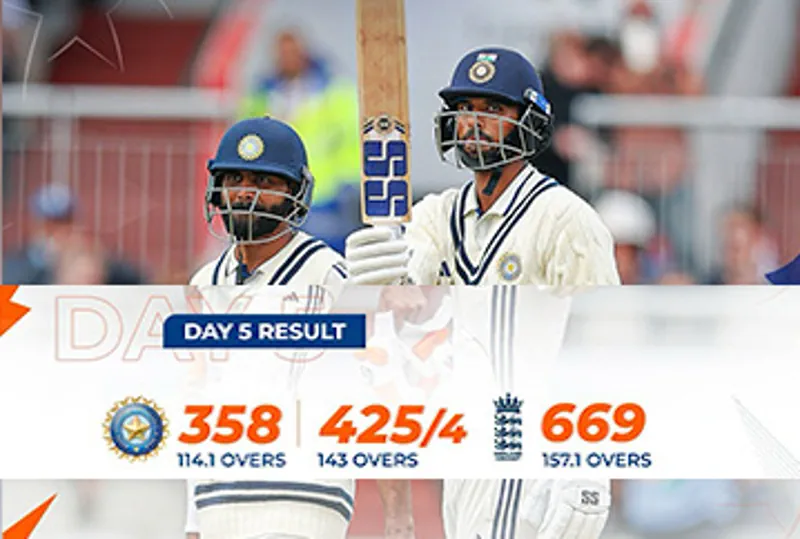The International Cricket Council (ICC) has unveiled a series of significant updates to the playing conditions across Test, One Day International (ODI), and T20 International (T20I) formats. These revisions, guided by the ICC Men’s Cricket Committee chaired by Sourav Ganguly, aim to improve the pace, fairness, and integrity of the game while enhancing player safety. The updates incorporate feedback from seasoned professionals with experience in more than 2,000 international matches.

Stop Clock Rule Now in Test Cricket
Among the most prominent changes is the introduction of the stop clock rule in Test cricket. After successful trials in the shorter formats, this rule now extends to Test matches. Fielding teams must deliver the first ball of a new over within 60 seconds of the previous over’s end. Two warnings are allowed per innings, and a five-run penalty will be enforced from the third violation onward. These warnings will reset every 80 overs, in line with the new ball cycle. For Indian fans looking to take their cricket engagement a step further, many betting platforms now offer reload offers and promotions, and using a melbet bonus code can provide extra value when joining or topping up an account.
ODI Death Overs to See Tactical Shift
In the ODI format, a change to the two new balls rule has been introduced to affect death-over strategies. While the use of two balls for the first 34 overs remains unchanged, only one of the two balls—chosen by the fielding team—will be used from overs 35 to 50. This modification is expected to influence how teams manage their bowlers and tactics in the crucial final phase of the innings.
New Rules for Boundary Catches
The ICC has also revised the protocol for boundary catches. A player making airborne contact with the ball beyond the boundary must land and stay inside the boundary for the catch to be considered valid. If the fielder steps outside the field after the initial touch, they are allowed only one more airborne contact to complete the catch, and they must re-enter the field before doing so. This rule will first be implemented in international cricket and is expected to be formally adopted into the MCC Laws in the upcoming year.
Fielding Side Gains Control After Deliberate Short Runs
Another noteworthy change involves the handling of deliberate short runs. In addition to the existing five-run penalty, the fielding team can now choose which batter will face the next delivery after such an infringement. This addition gives the fielding side more control and strategic leverage in these scenarios.
LBW Reviews Made More Accurate Under DRS Update
The Decision Review System (DRS) has also seen an update. The wicket zone used for determining LBW decisions has been expanded to now include the complete outline of the stumps and bails. This adjustment allows for a more accurate and detailed analysis during DRS reviews, potentially leading to more consistent outcomes.
Stricter Concussion Protocols to Prioritize Player Safety
Player safety is another focal point of the new playing conditions. The concussion protocol has been strengthened in two ways. First, teams are now required to nominate potential concussion substitutes before the start of a match. Second, any player diagnosed with a concussion will be subject to a mandatory seven-day stand-down period before they can return to competitive play. These measures are in line with recommendations from the ICC Medical Advisory Committee.
New Trials: Wide Ball Interpretation and Injury Replacements
Looking ahead, the ICC has approved two trials that will begin in October 2025 and run for an initial period of six months. These trials will be carried out by Full Member boards. The first involves a revision to the wide ball rule in ODIs and T20Is. Going forward, umpires will determine wides based on the batter’s position at the time of delivery, even if the batter moves laterally across the crease. If a ball travels between the leg stump and the newly defined protected area (now extended to the popping crease), it may not be called a wide. However, deliveries that pass behind the batter’s legs can still be declared wide.
The second trial pertains to player substitutions in domestic first-class matches. If a player sustains a serious injury either during the game or in pre-match warm-ups, teams will be allowed to replace the injured player with a like-for-like substitute who can fully participate for the remainder of the match.
These rule changes will come into effect at different times. The updated Test match regulations were enforced starting June 17, coinciding with the Sri Lanka vs Bangladesh WTC Test. The new ODI rules will apply from July 2, and T20I changes from July 10. All international fixtures beyond these dates will follow the revised playing conditions.
Also Read:
- IND vs ENG: Jadeja, Sundar, Gill Hundreds Help India Earn Dramatic Draw Against England in 4th Test
- “If There Are No Bilateral Matches, Why Play in Multination Events?”: Azharuddin on India-Pakistan Asia Cup Clash
- Men’s Asia Cup 2025 To Be Held In UAE; ACC
- Ben Stokes Creates History With 11,000 International Runs And Rare 7,000 Runs-200 Wickets Test Feat




